
॥ शिवास्ते सन्तु पन्थानः॥
“May your path be Auspicious.”
Yogasutra195
Perennial Psychology, Wisdom Beyond Time: Explore the Depth of Yoga-Sutras
Welcome to our comprehensive guide on the Yoga Sutra, the aim of establishing this website is to provide an easy access to the teachings of the ‘Yogasutra of Sage Patanjali’ for everyone. According to the International Yoga Federation, approximately 300 million individuals are currently practicing yoga worldwide. Thus, it becomes both: a privilege and a responsibility for these practitioners to understand the true essence of yoga.
The landscape of yogic practices has transformed notably over the periods of time, mirroring changes in our goals. It is crucial to acknowledge that our purpose shapes our perspective and defines our pursuit. Regrettably, some of these shifts may not fully honor the intentions of ancient sages. We’ve narrowed the scope of yoga to merely physical exercises, failing to recognize its holistic nature and full potential. Nevertheless, it’s essential to appreciate the valuable contributions of modern times. The contemporary therapeutic approach, employing techniques such as asana, pranayama, and yoganidra for healing, indeed signifies a commendable progress.
YS of Patanjali is the Living source text of Yogic – Wisdom traditions and their practices. Since remote antiquity, this text has served as a guiding light for all those who walked on the path of yoga. It is attributed to Sage Patanjali, who is believed to have lived around 400 BC. The term “Sutra,” derived from Sanskrit meaning “thread,” metaphorically represents an ancient writing style known for its technical precision. This format of writing originated in ancient India around 900 BC, and has been utilized by masters of various traditions to articulate their teachings. A sutra is a concise and precise, error-free technical statement, characterized by clarity and depth.
In Sanskrit Vedic parlance, “Darshana” is the word for philosophy, which literally means a sight or vision (realization) that enables us to see clearly. The YS of Patanjali is the foundational text of Yoga Darshana. The purpose is what determines the pursuit. Hence, an attentive study of the Yoga Sutras is meant to give us a purpose, or bring perspective into our practices, enabling those practices to be more effective.
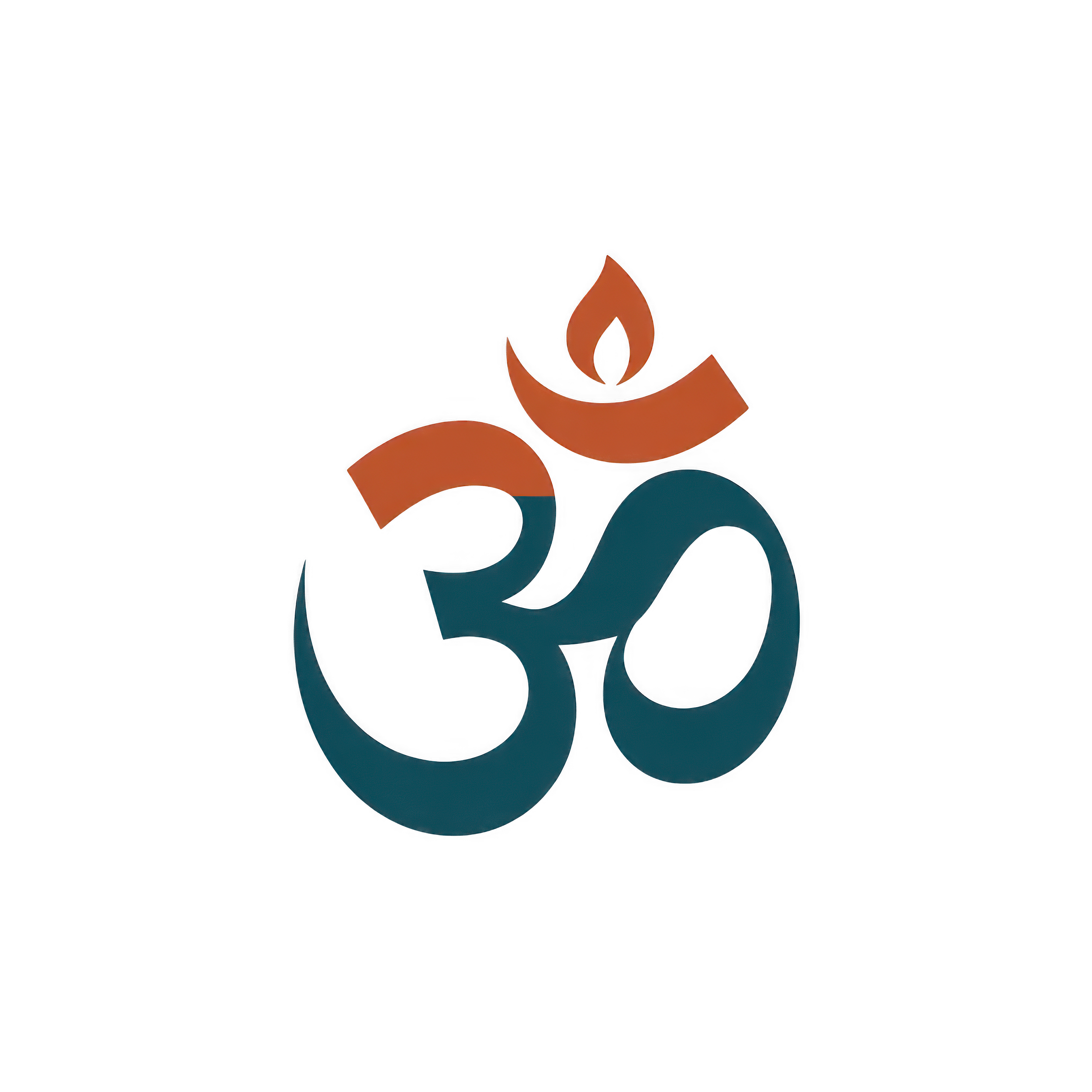
मङ्गलाचरणम्
Mangalacharana
[Prayer of invocation/Homage to Sage Patanjali]
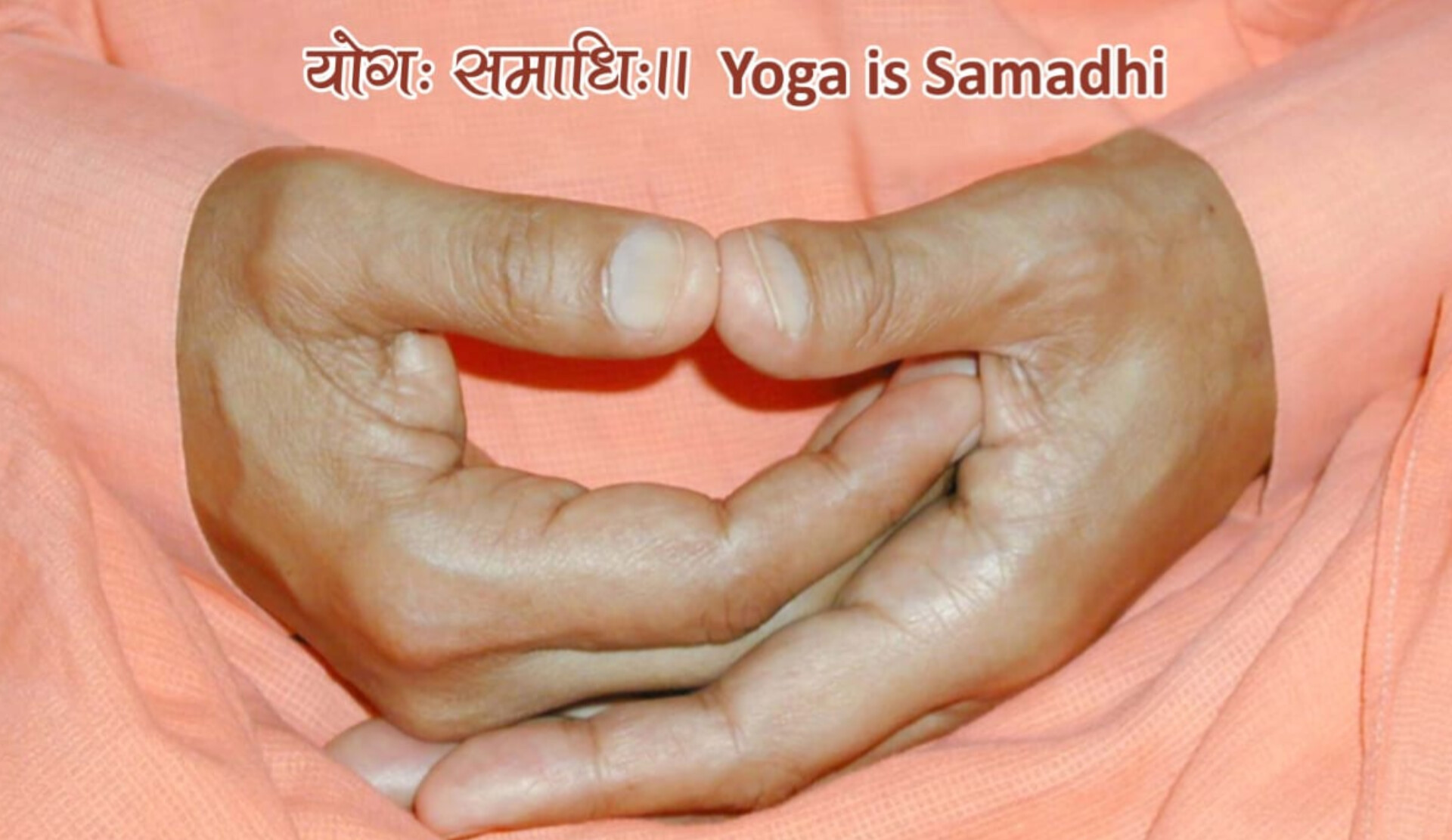
अखण्ड-मण्डलाकारम् व्याप्तम् येन चराचरम्।
तत्पदम् दर्शितम् येन तस्मै श्री गुरवे नमः॥
Akhaṇḍa-maṇḍalākāram vyāptam yena carācaram।
Tat padam darśitam yena, tasmai śrī gurave namah॥
अर्थ / Meaning
(Which) pervades the entire unbroken form of the circle (of creation), moving and unmoving.
To that beautiful and benevolent Guru through whom that state was revealed (to me), salutations.
Akhanda-mandalakaram
Undivided, indivisible, that which is not constituted of parts ever remains one, whole and complete. By the invocation of which, by the presence of which within us all divisiveness and delusion of our minds and spiritual forces recover and discover our own interior indivisibility and rediscover that we are made of objects for a part of which we identify ourselves are not the parts of the one, undivided, indivisible, spiritual essence.
Mandala
That which adorns all forms and essences. The warp and the web of the lines, rays, and strands of shakti emanating from a sun-like, moon-like point of energies along the lines of which the universes, forms and beings are constituted and like all the centripetal and centrifugal forces returns to the same. Adorned and beautified with these designs yet not becoming parts, divisables. The one complete whole.
Akaram
The one whom we call akaram adhya. The one who we invite, the one whose akararama, presence we invoke and merge with our presence, with our essence. Whose shape and form and configuration are no other than the indivisible arrangement of all the shaktis.
Vyaptam
By whom, by the one whose location is in the bija mantra Yam in the heart center. It is the place where the ascending and descending forces join in upward and downward triangles. That which is the nada, the sound, an inaudible sound vibration of that union of the ascending and descending forces. Yena by which, sound (vyaptam) is pervaded, is permeated. Vy-aptam is filled in all its varieties. Is made noble and sage-like through all of its vidyas, sciences, levels of knowledge.
Yena
Yena by whom it is permeated, pervaded, filled with nobility, knowledge and wisdom and all various ways (vyaptam).
Characharam
All that is moving, all that is unmoving, all that is moving that is the world of energies which alone have the true movement, which have the vibration, which do not merely give an appearance of moving but they that move all other things that are acharachara, not moveable by themselves, have not the power, the strength, the knowledge, the wisdom, the consciousness, the awareness, to move by themselves. Whose movement is dependent only upon the moving forces, achara. Unmoving like our body, like our bones, like blood, like our brain which are achara not moveable which cannot move without the chara forces. The forces of divinity that wander and travel and course through all of these forms and make them move. Thus the chara and achara both parts of my being, your being, our being, universal being, our deeper essence are all vyaptam pervaded, permeated by that maha nada-that sound that dwells in the heart, where the ascending and the descending forces meet. That one whose shape, form, configuration, is the adornment that is indivisible, the harmonious, centripetal and centrifugal lines and strands of energy and power.
Tat padam
That pedestal, that station, that state of consciousness, that level of awareness which is expressed by the word tat. That as in tat savitur varenyum as in tat twam asi. He who has show me the meaning of that level, that state of awareness which is the true meaning of the word tat-That. He who has shown me the meaning of the word That. Tat padam darshitam yena..
Darshitam
Was shown to me.
Yena
It is by Him. By that one by that force, by that interior sound which is the concentration of the vibration of all the mantras.
Tasmai
To that one.
Shri Gurave namah
To that Shri Guru, the one. Gu, darkness, ru, remover. He who removes darkness by the presence of the force called Shri, which is the principle and divinity of all beauty. By whose brilliant beauty gives refuge, ashraya, to all beings, all levels of essence. To that remover of darkness who removes the darkness by that brilliance of beauty. Divine Mother’s beauty. Unto that one namaha. Into that one I merge all my exterior beings and say of them not mine, not mine, not mine. Not mine the body, not mine the limbs, not mine the organs, not mine the senses, not mine emotions, feelings, sentiments. Not mine, intellect, intuition, doubt, resolution, not mine. Intent, declaration, statements that I am, not mine. Unto that one I surrender all my claims of ego. Namaha. The last ma, ha sound. The release of energy. May I through that surrender find in myself that release. Release of that energy which I have kept blocked and because of which I have felt blocked in my life. In my endeavors, in my undertakings. I was blocked because I had not surrendered my mind. Having surrendered my mind I say namaha. This is the nature, this is the meaning of my surrender, my homage, my prostrations. I take all of these claims and I burn them. All my ego and I burn it into the fire of that essence which is the indivisible, universe adorning arrangement of the beautiful energies in all their various forms. Imbuing and suffusing all immoveable things with the semblance of movement. By whose presence by the presence of which force, by the grace of which force the meaning of the true pedestal has come to me, has become known to me. I surrender. I burn my being as an offering unto that fire.
~ H. H. Swami Veda Bharati Ji.
योगेन चित्तस्य पदेन वाचां। मलं शरीरस्य च वैद्यकेन॥
योऽपाकरोत्तं प्रवरं मुनीनां। पतंजलि प्राञ्जलिरानतोऽस्मि॥
Yogena cittasya padena vācāṁ malaṁ śarīrasya ca vaidyakena।
yopākarottaṁ pravaraṁ munīnāṁ patañjaliṁ prāñjalirānato’smi॥
अर्थ / Meaning
योग से चित्त का, पद (व्याकरण) से वाणी का व वैद्यक (आयुर्वेद) से शरीर का मल, जिन्होंने दूर किया, उन मुनि श्रेष्ठ पतञ्जलि को मैं अञ्जलि बद्ध होकर नमस्कार करता हूँ।
I bow down with folded hands to Sage Patanjali, the most exalted among the most contemplative sages, who removed the impurities of the mind-field through yoga, of speech through Sanskrit-grammar and of the body through Ayurveda.
OM Tat Sat Iti![]()
यस्त्यक्त्वा रूपमाद्यं प्रभवति जगतोऽनेकधाऽनुग्रहाय। प्रक्षीणक्लेशराशिः विषमविषधरोऽनेकवक्त्रः सुभोगी॥
सर्वज्ञानप्रसूतिः भुजगपरिकरः प्रीतये यस्य नित्यं। देवोऽहीशः स वोऽव्यात् सितविमलतनुर्योगदो योगयुक्तः॥
Yastvaktvā rūpamādyaṁ prabhavati jagato’nekadhā’nugrahāya। prakṣīṇakleśarāśiḥ viṣamaviṣadharo’nekavaktraḥ subhogī॥sarvajñānaprasūtiḥ bhujagaparikaraḥ prītaye yasya nityaṁ। devo’hīśaḥ sa vo’vyāt sitavimalatanuryogado yogayuktaḥ॥
अर्थ / Meaning
हम भगवान् आदिशेष को साष्टांग प्रणाम करते हैं, जिन्होंने जगत् के कल्याण के लिए अपने मूलरूप को त्यागकर पतञ्जलि का रूप धारण किया, जिनके समस्त क्लेश क्षीण होकर नष्ट हो चुके हैं, जो विषम विषधर हैं, जिनके सुन्दर फणयुक्त अनेक मुख हैं, जो समग्र ज्ञान के स्रोत हैं, जिनकी प्रसन्नता के लिए उनके अनुचर उनकी प्रदक्षिणा करते हैं, जिनका शरीर श्वेत दीप्ति से युक्त और निर्मल है, जो स्वयं योगारूढ़ और योग को प्रदान करने वाले हैं, ऐसे वह देव हमारी सदा रक्षा करें।
May He Who abandons [his] primordial form and nature, appears as a master (Pra-bhu) for [conferring] manifold grace to the world; Whose accumulation of afflictions has diminished, vanquished; Who has an uneven [number of] poison-bearing snakes [as his body]; He of many faces, with beautiful expanded hoods; The source of the birth of all [branches of] knowledge; For whose pleasure the snakes ever [form the] parameters; He with the bright white stainless form, In yoga joined, the yoga-giver, The divine (deva) Lord of Serpents – Grant you [all] His guardianship and protection.
OM Tat Sat Iti![]()
About Sage Patanjali
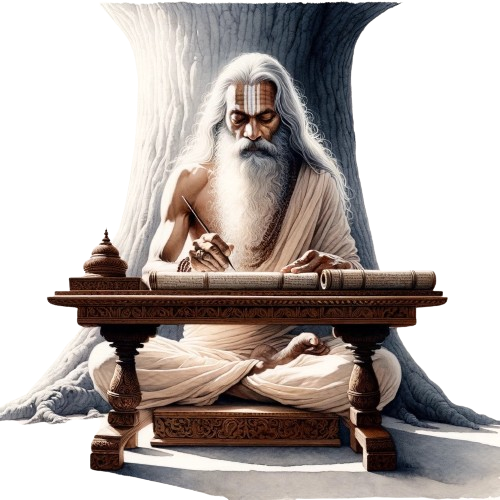
I bow down with folded hands to Sage Patanjali, the most exalted among the most contemplative sages, who removed the impurities of the mind-field through yoga, of speech through Sanskrit-grammar and of the body through Ayurveda.
Sage Patañjali holds a position of utmost reverence in the annals of yoga history as the author of the Yoga Sutras. He is thought to have lived between the 2nd century BCE and the 5th century CE, though some interpretations extend his presence even further back in time. If we rely solely on the evidence provided by modern archaeological excavations, literary studies, and linguistic analyses, Sage Patañjali may seem quite elusive. It is difficult to locate him definitively in one place at one time. Several ancient texts are attributed to him, and archaeological findings indicate his presence in more than one location across modern-day India.
Read more
- Some interpretations suggest he was born in Kashmir into a Brahmin family, while others claim it was in Gonarda (in Punjab).
- According to Patañjali-charita, his mother’s name was Goņikā. He is remembered in tradition as Gonika-putra (the son of Goņikā), indicating her as a great master herself. Therefore, there should be no issue in accepting that he was initiated into the path of yoga by his mother.
- There existed a Patañjali contemporaneous with Shunga-dynasty king Pushyamitra, extensively mentioned in his text on Sanskrit grammar/Mahabhasya.
- Additionally, he is also recognized as Charaka (a wandering adept), a siddha, among the twenty-eight lords of siddhas (siddhesha) listed in the Bhagavata-purāṇa (6.15.12-15).
- In the Siddha tradition of the Tamil country, Patañjali is one of the eighteen revered siddhas. In the Tiru-mantiram of Tiru-Mular (1.4.67), he is said to be one of the eight founders of the Guru tradition who worshipped in the ‘Holy Sabha’ along with Vyāghrapada. Furthermore, it is recounted that he received knowledge through the grace of Nandi.
- In the texts and citations about Patañjali, his name is frequently associated with other founders of the Sanskrit grammatical tradition, such as Panini and Vararuchi-Katyayana (7th-2nd century BCE). Even today, the texts of Panini, Vararuchi-Katyayana, and Patañjali are studied as a grammatical composite whole. These three masters are collectively referred to as the Muni Traya (‘the triad of contemplative sages’) One of the most notable citations is – “बहुवित्तु पतञ्जलिः” (“bahu-vit tu Patañjaliḥ”), meaning “Patanjali is multiscient [one who knows much about many sciences].” This attribute is clearly evident in the verse which states Patañjali to be an acharya of medical science (vaidyaka), grammar (vyakaraṇa), and yoga, with the ability to rectify the flaws of body, speech, and mind respectively through his teachings in each of these disciplines.
OM Tat Sat Iti![]()

The Four Chapters
On Freedom
This chapter is primarily on Samādhi, which is the pinnacle of all yogic practices. The commonly used English translation for Samādhi is “meditative absorption”—the final stage of meditation wherein the sense of individuality dissolves completely into the object of contemplation.
The chapter delves deeply into the nature of the human psyche and the structure of consciousness. It (in commentary) examines the different grounds (bhūmis) of the mind-field (citta), its various functions and operations, and the essential need to establish mastery over its modifications. Yoga is defined as the cessation of these fluctuations, and it is through this mastery that the seer (draṣṭā) abides in his/her/its own true nature.
Read more
To accomplish this stilling of the mind, a twofold method is prescribed: persistent practice (abhyāsa) and non-attachment (vairāgya). These two work together to subdue the tendencies of the mind and create the conditions necessary for samādhi to arise.
The chapter then elaborates on the types of samādhi, beginning with saṁprajñāta samādhi—which includes various stages involving reflection on gross and subtle objects—and leading into asaṁprajñāta samādhi, a higher state in which even the impressions of previous experiences are silenced. These are not abstract ideals; they are described as attainable by practitioners through progressive refinement of consciousness.
Types of aspirants are also identified: those born with inherent spiritual tendencies (bhava-pratyaya yogins), and those who must cultivate the path through faith, energy, memory, deep contemplation, and wisdom. The speed of progress depends on the intensity of one’s aspiration, and practitioners are grouped accordingly—mild, moderate, or intense.
The chapter then introduces the concept of Īśvara—a unique puruṣa untouched by afflictions, karma, or the residues of memory. Īśvara is said to be the eternal teacher of all ancient sages, and his signifying symbol is the sacred mono-syllabic sound OM. By repeating and meditating on OM, and through surrender to Īśvara (Īśvara-praṇidhāna), the practitioner’s mind becomes purified and steady, leading to the state of samādhi.
As the path deepens, the aspirant must be aware of various obstacles (antarāyas) that can arise—such as illness, doubt, negligence, laziness, sensual indulgence, erroneous perception, failure to progress, and instability in meditation. These obstacles manifest in forms such as mental distress, physical discomfort, or disturbed breathing. To overcome them, a method of one-pointed concentration (ekatattva-bhāvanam) is advised.
The text provides several means to purify and pacify the mind (citta-parikarma): cultivating friendliness toward the joyful, compassion for the suffering, joy in the virtuous, and equanimity toward the impure. Additional methods include breath awareness, inner illumination, contemplation of serene minds, and concentration on dreams or intuitive flashes. These practices help to stabilize attention and prepare the ground for deeper states of absorption.
The chapter also presents the concept of Samāpatti—a state of coalescence where the mind becomes so clear and still that it perfectly reflects the object of meditation, like a transparent jewel. This state evolves through stages—from deliberative and reflective to blissful and purely subjective—until even the subtlest mental constructs dissolve.
Beyond these lies meditation on subtle objects, which leads to a profound clarity of consciousness. The culmination is a state in which the mind is no longer colored by its own tendencies and becomes a pure instrument of direct perception.
As the practitioner enters deeper states of nirvicāra samāpatti, a special kind of insight arises—ṛtambharā prajñā, or truth-bearing wisdom. This knowledge is not derived from inference or tradition but springs directly from the clarity of meditative absorption. Yet even this highest wisdom leaves a subtle impression, and eventually, even that must be transcended.
The journey of Samādhi Pāda culminates in the attainment of nirbīja samādhi, or seedless absorption—where all impressions have been silenced/transcended. This is the ultimate absorption, beyond all forms and functions of mind. In this stillness, the true Self shines in its own light—free, undisturbed, and fully realized.
OM Tat Sat Iti![]()
» Listen to the entire Samadhi Pada «
This chapter is primarily on practice, rather practices. It begins with the threefold discipline of Kriyā-Yoga—tapas (austerity), svādhyāya (self-study: study of scriptures pertaining to spiritual-libration, japa or repeated mental recitation of mantra like OM), and Īśvara-praṇidhāna (surrender to the Supreme Being)—as a preparatory path for calming the mind and reducing the afflictions.
It then describes in detail the five fundamental causes of human suffering (kleśas): ignorance, I-am-ness/ego, attachment, aversion, and fear of death. These are seen as the root of all inner turmoil, and they operate at varying degrees of subtlety—from dormant to fully active.
Read more
The chapter then explains that the subtlest forms of kleśas are removed by a process of returning inward into stillness through deep meditation. While gross kleśas can be weakened by austerity and ethical living, the subtle tendencies dissolve only through the absorption of the mind into its source. It further describes the link between these afflictions and the cycle of karma—that every action, motivated by these kleśas, leaves impressions that ripen into future birth, experience, and lifespan.
It is explained that as long as the root cause—ignorance—remains, the impressions of karma continue to bear fruit across future lives, shaping one’s birth, lifespan, and experiences of pleasure and pain. Future suffering, however, is avoidable—but only through inner purification and true understanding. The root cause of suffering is further identified as the mistaken identification of the seer (puruṣa) with the seen (prakṛti). As clarity deepens, the yogi recognizes that even pleasant experiences are ultimately unsatisfying and turns inward in search of lasting freedom.
Following this, the chapter discusses the nature and purpose of the seen (dṛśya)—that is, the entire material universe (prakṛti), including the body, senses, and mind—which exists to serve the dual purpose of experience and liberation for the seer.
It then reflects on the essential nature of the seer (puruṣa), who is pure consciousness, unchanging and distinct from the mind. Liberation is described as arising from clear discrimination (viveka-khyāti) between the seer and the seen, resulting in the cessation of false identification and the end of suffering.
Thereafter, it presents the seven stages of insight (prājñā-bhūmi) that unfold in a yogi’s inner journey, culminating in final discrimination. The yogi who has developed this clear discernment moves beyond karma and reaches the threshold of liberation.
Finally, the chapter presents the foundational structure of Aṣṭāṅga Yoga, the eightfold path, and elaborates on the first five limbs—the bahiraṅga sādhana or external practices. Through consistent and dedicated practice of these limbs, impurities are gradually diminished and vanish, kindling the knowledge all the way up to the illumination of discriminative wisdom.
Yama – universal restraints, which include non-violence, truthfulness, non-stealing, celibacy/moderation, and non-possessiveness. These are emphasized as mahā-vratas, or great vows, applicable to all, regardless of time, place, or context.
Niyama – personal observances, including purity, contentment, austerity, self-study, and surrender to Īśvara.
Āsana – posture, defined not by complexity but by steadiness and comfort. Mastery of āsana leads to a state where effort is relaxed and meditation becomes natural.
Prāṇāyāma – the regulation of breath, which follows the establishment of a steady posture. It includes measured inhalation, exhalation, and retention, leading to the inward turning of the mind and clarity of consciousness.
Pratyāhāra – withdrawal of the senses from their objects, a state where the senses no longer follow external stimuli but rest in the mind. This marks the transition to the internal limbs of yoga and prepares the practitioner for deeper absorption.
OM Tat Sat Iti
» Listen to the entire Sadhana Pada «
This chapter primarily addresses the attainments (vibhūtis) resulting from yogic practices—often referred to as siddhis or mystic powers. The Sanskrit root of the word Vibhūti is BHU, meaning “to be,” while the prefix vi denotes distinction, variety, or specialization. Thus, Vibhūti signifies a distinct or specialized manifestation of one’s being—a verity or unique expression of one’s existence.
The chapter explores these vibhūtis—the myriad ways in which the singular mind-field/personality can manifest: various powers, forms, and expressions. The One expresses itself through the many.
Read more
It opens by completing the discussion of the final three limbs of Aṣṭāṅga Yoga—known as the antaraṅgas—and then unifies them into a singular practice: samyama, the key instrument for gaining deep yogic insight. When practiced, samyama becomes a powerful tool for accessing subtler levels of experience. Mastery of this triad brings forth the light of inner wisdom (prajñā). Though subtler than the previous limbs, samyama is still considered external when compared to seedless samādhi.
The text then turns inward, describing the transformation of the mind-field (citta) through various modes of change:
- Nirodha-pariṇāma marks the growing dominance of the tendency
toward stillness, leading to a natural and uninterrupted flow of calm (praśānta-vāhitā). - Samādhi-pariṇāma refers to the transformation wherein distractions fade and the mind moves toward absorption.
- Ekāgratā-pariṇāma indicates the establishment of one-pointed concentration.
These inner shifts are correlated with the universal process of change, which unfolds through dharma (substratum), lakṣaṇa (qualities), and avasthā (states). By applying samyama to the nature of change itself, the yogi gains insight into the past and future.
With this foundation, the core theme of the chapter begins: the diverse applications of samyama give rise to extraordinary abilities:
- Samyama on the relationship between sound, meaning, and intention grants knowledge of all forms of communication.
- On latent impressions (saṁskāras), it reveals memories of past lives.
- On the mind of another, it unveils their mental processes—not the content, but the structure of thought.
- On the distinction between the observer and the observed, it deepens detachment and insight.
By withdrawing the light of perception from the body through samyama, the yogi becomes invisible. Applying it to karma grants knowledge of death and omens. On the brahma-vihāras—love, compassion, etc.—it cultivates their corresponding powers. Inner strength is developed through focus on the vitality of animals like elephants.
By projecting the light of awareness (pravṛtti, as mentioned in Sutras 1.35–1.36), the yogi gains knowledge of things that are subtle, hidden, or distant.
The chapter continues with samyama applied to cosmic and elemental principles:
- On the sun, it yields knowledge of the cosmic order;
- On the moon, knowledge of the stars;
- On the pole star, understanding of their motions.
Further:
- Samyama on the navel brings knowledge of bodily systems;
- On the throat, freedom from hunger and thirst;
- On the chest, mastery of bodily steadiness;
- On the crown of the head, perception of siddhas—accomplished beings.
Focusing on the heart brings insight into the nature of consciousness. Discriminating between sattva and puruṣa yields knowledge of the Self. As this mastery deepens, divine powers such as clairaudience and clairvoyance arise—but the yogi is cautioned that these too must ultimately be transcended.
Loosening the bonds of ego and understanding the vital flows (pravṛtti) enables entry into another’s body. Mastery over udāna allows the yogi to rise above obstacles or levitate; samāna kindles inner brilliance. Samyama on the relationship between body and space produces lightness and freedom of movement. Attuning to subtle hearing brings perception of divine sounds. These powers, though refined, still belong to the domain of prakṛti (nature).
With these accomplishments, the yogi’s body becomes perfected—strong, graceful, and luminous. Actions arise effortlessly; the will manifests spontaneously. The senses become refined and extraordinarily effective.
Ultimately, however, the supreme attainment lies not in these powers, but in the clarity of viveka-khyāti—the discriminative knowledge that distinguishes the seer (puruṣa) from the seen (prakṛti). When this clarity becomes uninterrupted and unwavering, liberation (kaivalya) is near.
The chapter culminates in describing the final unfoldment of yogic realization. As viveka-jñāna (discriminative insight) becomes fully purified, it transcends linear, conceptual knowledge and unfolds into a timeless, all-encompassing clarity. In this highest state, when the reflective quality of the mind (sattva) matches the purity of puruṣa, their distinction becomes fully revealed. The mind, now free from all impressions, turns inward and dissolves into stillness. The yogi abides in kaivalya—absolute freedom, untouched by thought, time, or nature.
OM Tat Sat Iti![]()
» Listen to the entire Vibhuti Pada «
This chapter primarily focuses on the ultimate goal of yoga—Kaivalya, meaning aloneness, the state of being absolute and alone—i.e., absolute independence and freedom: the state in which the puruṣa (the spiritual self) becomes established in its own essential nature as actionless, infinite, pure consciousness.
The chapter begins by concluding the subject of siddhi—extraordinary attainments or powers (vibhūti) —that they may arise from janma (birth), auṣadhi (herbs), mantra, tapas, or samādhi. These powers are not the goal of yoga, but natural outcomes of deeper transformations. The text then explores how a change from one jāti (kind or category) into another happens through the influx (pariṇāma) from a subtler cause—such as the tanmātra or asmitā.
Read more
Such causes are not activated externally; rather, the yogi simply removes the obstacles—like a farmer who only breaks the barrier for water to flow. The mind can then give rise to other minds from its own asmitā, which can animate separate bodies. These minds are still guided by the one original citta.
Among these, the nirmāṇa-citta (mind born of samādhi) remains free of karmāśaya (residual impressions). The karma of a yogi is not śukla (white), kṛṣṇa (black), or miśra (mixed), unlike the actions of others. From these actions arise vāsanā—latent tendencies—which unfold according to the qualities of the vipāka (fruit).
Because smṛti (memory) and saṁskāra are of the same nature, distance in jāti, deśa, or kāla (category, place, or time) makes no difference—the impressions remain. Since expectation (āśayāḥ) is beginningless, so too are vāsanāḥ. Yet, they arise only when the necessary causes (hetu), fruits (phala), substratum (āśraya), and supports (ālambana) are present. Without these, vāsanā does not appear.
Even so, their atītānāgata (past and future) aspects remain real due to the bheda (diversity) in the flow of dharma (processes or attributes). These dharma arise from the guṇa—either manifest or subtle. Because each transformation (pariṇāma) of the guṇa is unique, the identity of an object is defined.
The text then examines how even with the same object, different citta experience it differently—showing that perception is subjective. An object’s existence cannot depend on one citta alone, for when that citta is not perceiving, the object still remains. What determines knowledge is the reflection (pratibimba) that appears in citta.
The operations of citta are always known to puruṣa, the unchanging draṣṭṛ (Seer). But citta itself is not svasaṁvedya (self-luminous); it is seen. It cannot perceive both the object and itself at once. Nor can one buddhi be known by another in an endless chain—this would lead to infinite regress and saṁkara (confusion) of smṛti.
Instead, the puruṣa, though itself changeless and untouched, reflects the form of its buddhi and becomes jñātā (knower). The citta colored by both draṣṭṛ and dṛśya becomes capable of perceiving all. Even if it holds infinite vāsanā, it functions only in service to another—puruṣa—because it is part of an aggregate.
Once the distinction (viveka) between puruṣa and citta is fully realized, all further viveka-khyāti (discriminative inquiry) ends. Then, citta is drawn toward kaivalya. However, due to old saṁskāra, thoughts may still arise in the gaps—like when a monk wanders for alms.
The text then defines how these remaining thoughts must be removed like the kleśa (afflictions), as taught earlier. When even the desire for vivekaja-jñāna (enlightenment through discriminative knowledge) fades, then comes dharma-megha samādhi—the cloud of virtue, bestowing knowledge of all dharma.
At this point, both kleśa and karma cease. Then, jñāna becomes free from āvṛtti (coverings) and infinite. There remains little left to know. With this, the flow of guṇa-pariṇāma (transformation of guṇas) comes to an end.
The text finally describes krama, the sequence of transformation, as the grasping of kṣaṇa (moments) in a distinct and ordered way. When guṇa dissolve back into their origin, having served the purpose of puruṣa, there is kaivalya—the supreme aloneness. Then puruṣa is established in its svarūpa (own true nature), utterly free and self-contained.
OM Tat Sat Iti![]()
» Listen to the entire Kaivalya Pada «
ARTICLES YOU MAY LIKE
Karmashaya-La Mente Programmata: Liberarsi dal Destino e Riscrivere la Propria Realtà
La nostra esistenza si definisce attraverso posizionamenti precisi, che scaturiscono dalle propensioni subconscie conosciute come vasana. Queste non sono casuali, ma radicate nella conformazione iniziale della nostra mente, chiamata Asmita Matra. Questa configurazione...
SERENITY IN SECONDS The Art & Science of “Short-Meditation” (2–5 Minutes Only)
There are two ways to meditation. Formal one that you do at special times and informal that you can do sitting in an office chair or in a car or even in the middle of a noisy party and since the whole world has become a noisy party it’s more likely that we are going...
Saumya Mantra / सौम्या मंत्र Saumya: A Devi Mantra for Emotional Purification and Inner Peace
What is Mantra? Śāstra Says: Mananāt trāyate iti mantraḥ — “That which protects (trāyate) through contemplation (mananāt) is mantra.” ‘Mananāt’ means reflecting, contemplating, or meditating upon; ‘trāyate’ means to protect or liberate. Thus, a mantra is that which...
A Structured Summary of Kaivalya Pada
A Structured Summary of Kaivalya Pāda The Kaivalya Pāda, the fourth and final chapter of Patañjali’s Yoga Sūtras, is devoted to the ultimate goal of yoga—kaivalya, or absolute liberation. While earlier chapters focus on practice (sādhana), meditative absorption...
A Structured Summary of Vibhuti Pada
Vibhūti Pāda – The Chapter on Accomplishments; the Manifestations of Powers, and Inner Mastery. Vibhūti - the verb-root for Vibhūti is BHU meaning to be. Prefix Vi means having a verity; Variation and specialization or Distinction. Therefore, A specialized and...
What is a Sutra? How Many Sutras are in the Yoga Sutras—195 or 196?
The Sanskrit word sutra conventionally means “thread” or “string.” However, in its contextual use—particularly in reference to ancient texts known as sutra-shastra (texts composed in the sutra style), such as The Yoga Sutra of Sage Patanjali—it metaphorically...


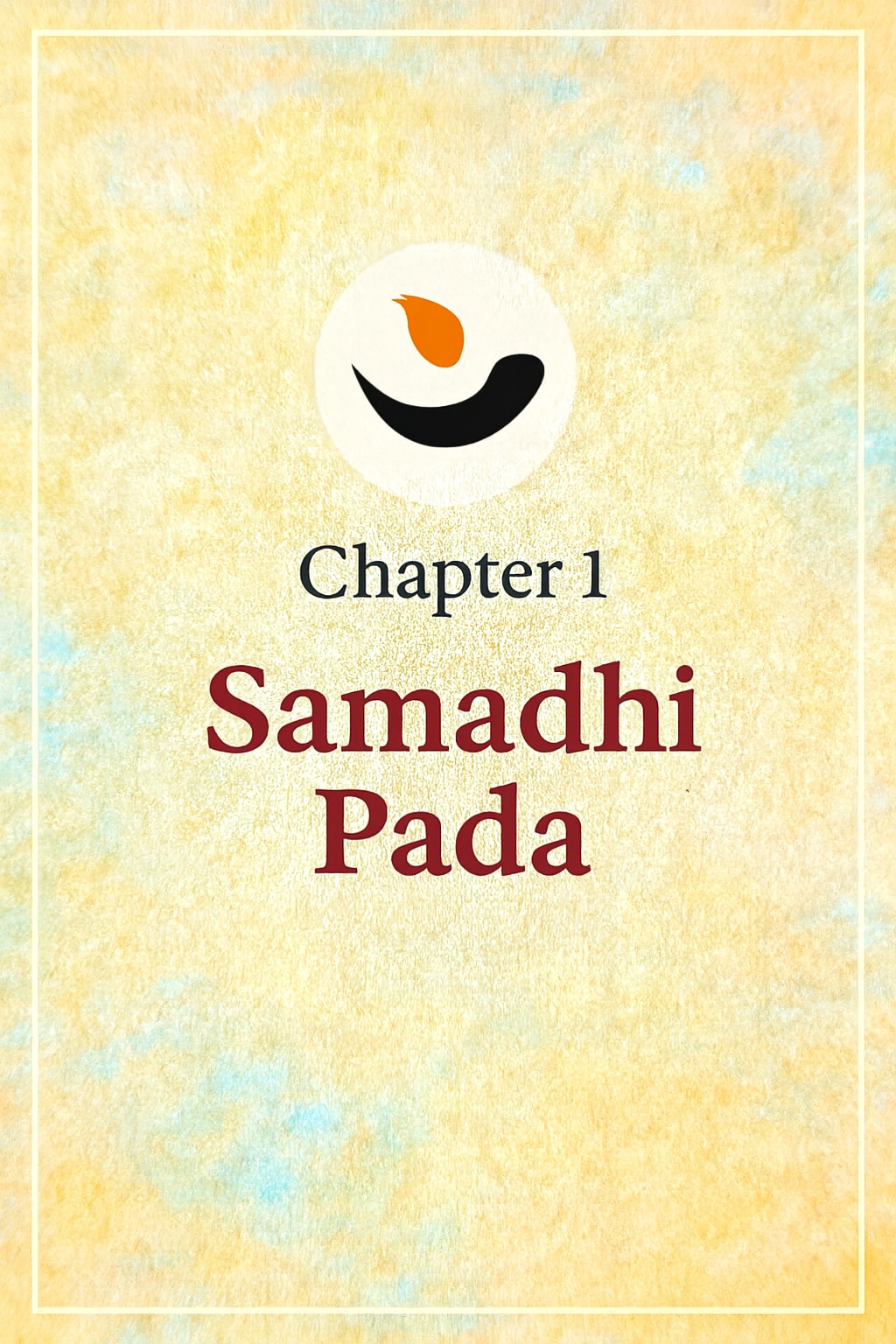
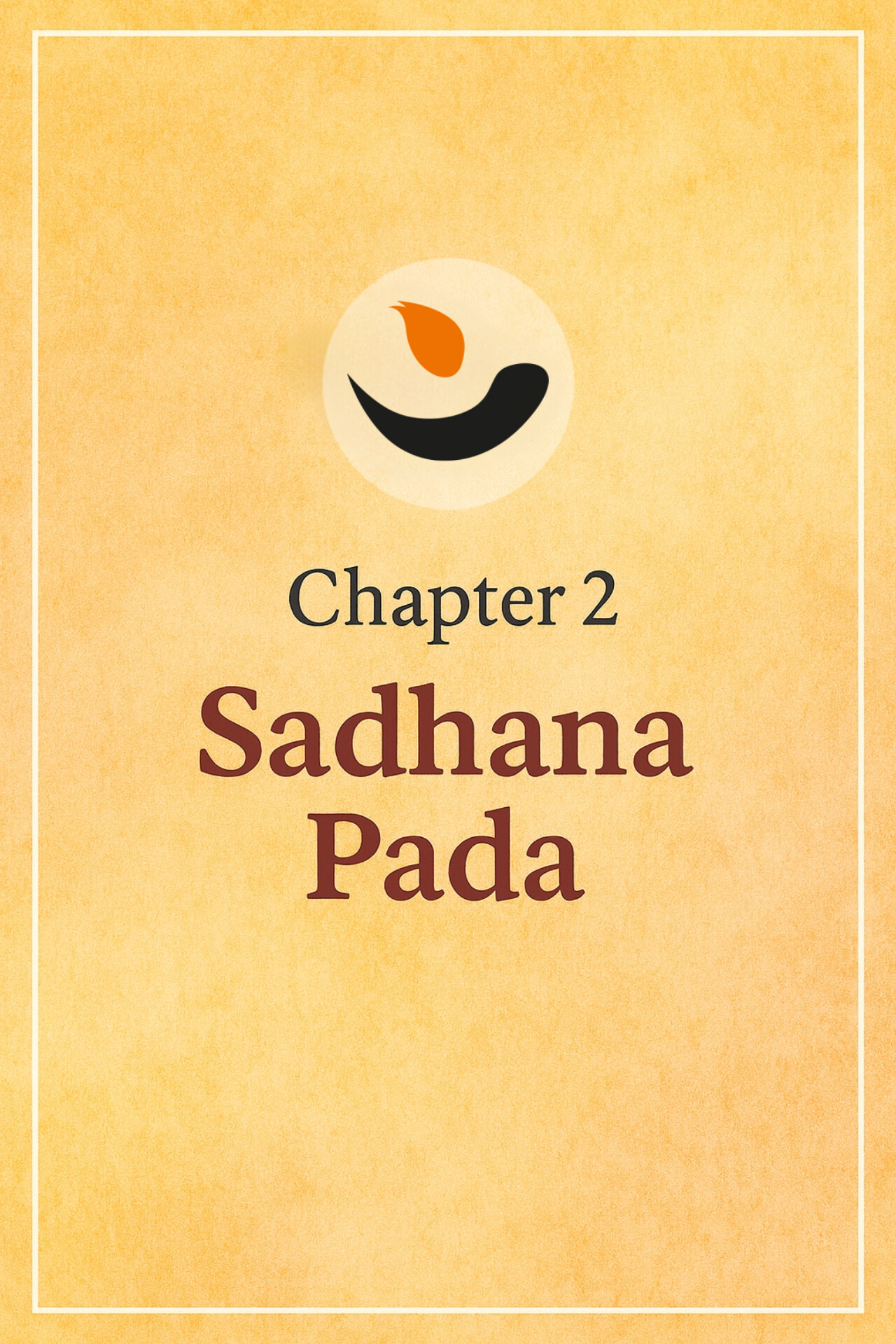
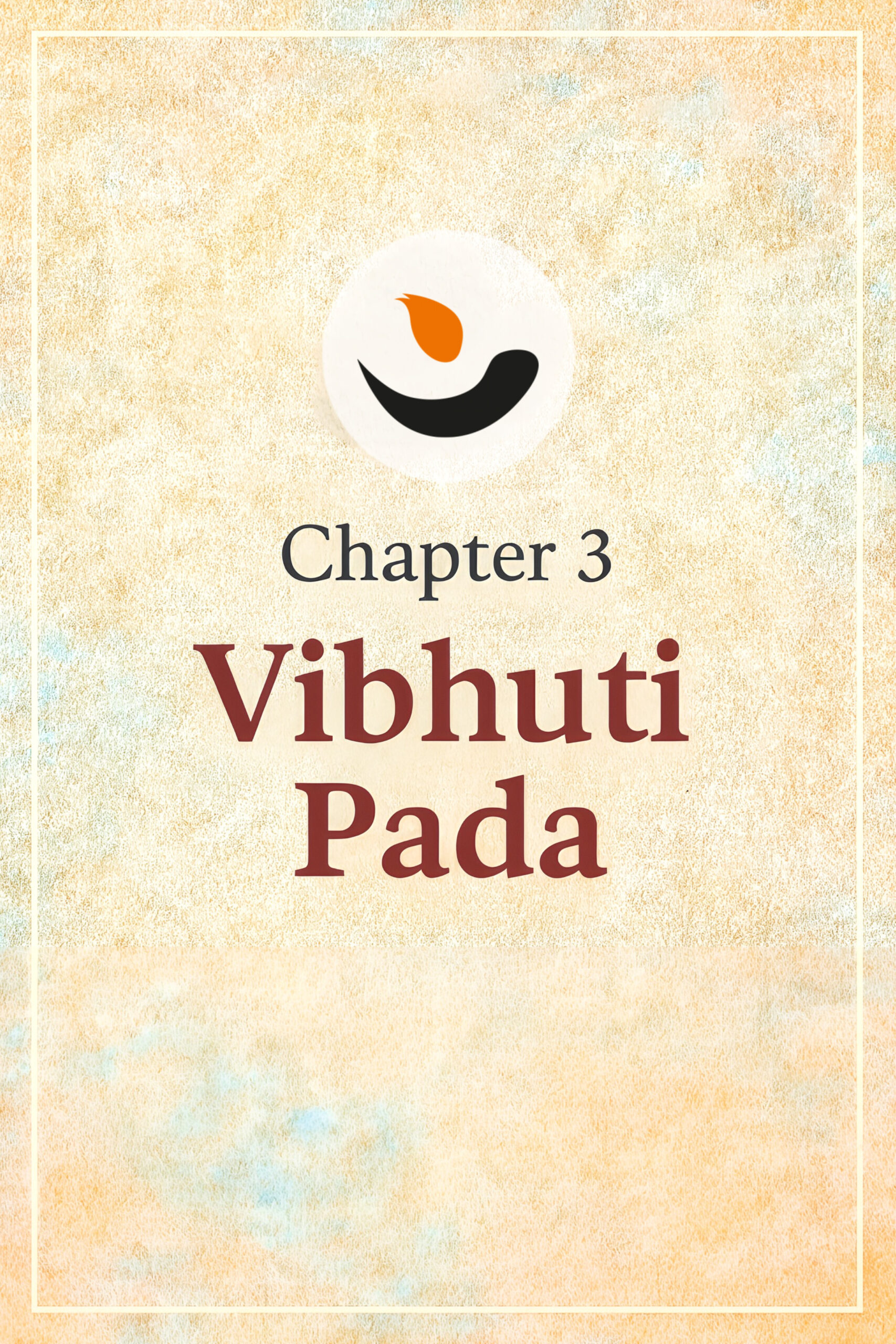
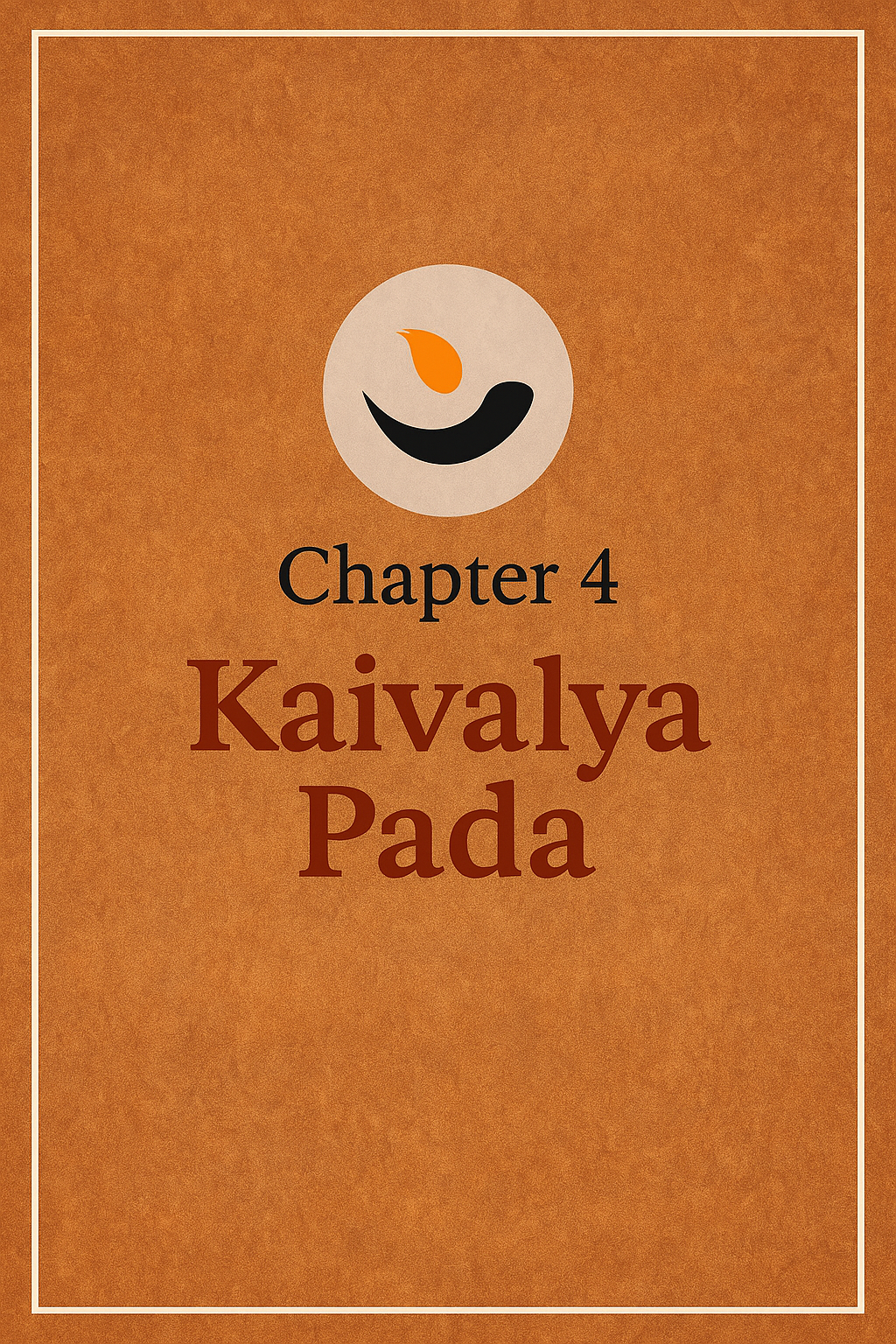


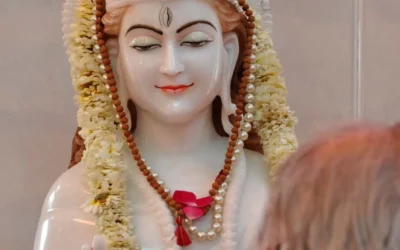


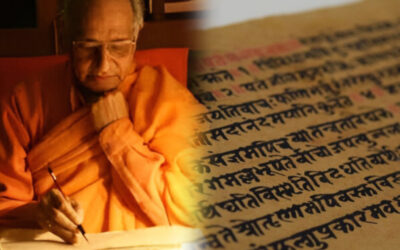

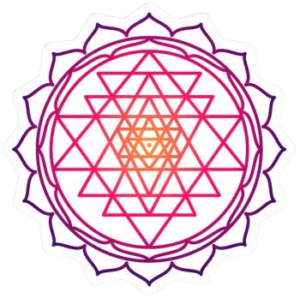
Share This
Share this post with your friends!